Zamioculcas flower, leaf propagation, cultivation and care
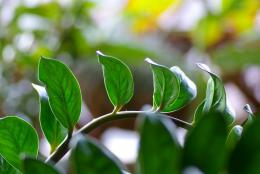
At the beginning of the twentieth century, the Zamioculcas flower was widely used by modern flower growers and received its modern description and the name from two German botanists A. Engler and G. Peter. Another century later, Zamioculcas became very popular for landscaping residential and office premises.
Content:
- Description of Zamioculcas
- How to propagate Zamioculcas with leaves
- Growing conditions and care features
Description of Zamioculcas
The plant genus Zamioculcas from the Araceae family is represented by the species Zamioculcas zamifolia. It has several botanical and folk names. The most popular of them is ZZ, which is most often used by foreign flower growers. Sometimes the plant is called an aroid palm, although it has nothing to do with palm trees.
The homeland of ZZ is the tropical regions of the African continent and nearby island territories. The root system of the herbaceous perennial is represented by a fairly well-formed tuber and rhizome. The evergreen leaves of this plant are noteworthy.
They are complex, large in size, leathery in appearance and touch, with a well-defined waxy coating. This is due to the dry climate of ZZ's natural growth.
At home, the plant reaches a height of 150 cm; there is a low-growing cultivar - 60 cm. conditions rarely blooms indoors. Its small yellow or off-white flowers are collected in a spadix, which is located at the bottom of the plant and covered with a green blanket.
Even in the wild, the plant blooms quite rarely, and when grown indoors in temperate latitudes, the possibility of obtaining flowers and seeds from ZZ is almost zero. Therefore, only vegetative propagation is available to amateur flower growers. In addition to the fact that new plants can be obtained from cuttings and dividing the bush, zamioculcas can also be propagated by leaf blades.
How to propagate Zamioculcas with leaves
Propagation by leaves - this method is the most accessible, because it is not difficult to get a couple of leaves, even without having an adult plant at home. Important! This plant has complex leaves, they do not look like a leaf, but like a whole shoot with many leaf plates. Therefore, a sheet will mean a separate sheet plate. Despite its simplicity, leaf propagation requires care.
There is only one significant drawback - it is a rather slow process. To implement it you need:
- prepare sharp and clean instruments, such as a medical scalpel
- Carefully cut a leaf from an adult plant along with the petiole; this can be timed to coincide with the spring replanting of the flower
- keep the leaf without water and soil for 48 hours
- start rooting
- You can root leaf blades in water and in the ground
Rooting in water
Pour water into a small container, preferably transparent. The leaf is immersed in it no more than a third of its length. Periodically, the water needs to be changed to clean water. The process of roots appearing and reaching a size suitable for transplanting into the ground can take two to three months. It is important to observe the temperature and light conditions all this time.
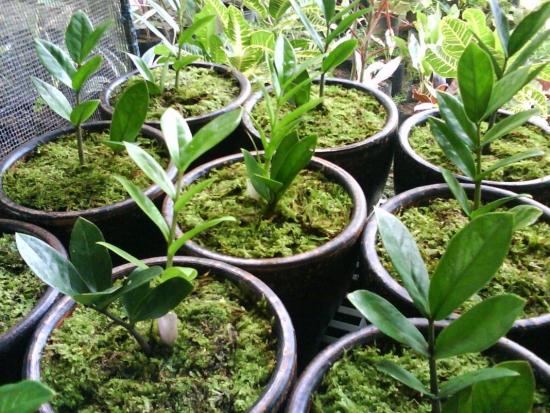
The temperature in the room should be about + 20 + 22 degrees, good light is needed, but direct sunlight is undesirable during this period.You can speed up the process by adding a few drops of root per liter of water.
Rooting in the ground
To root in the ground you will need to take:
- capacity
- peat
- expanded clay or foam
- perlite
- several leaves with or without petioles
The selected container must have holes for drainage of excess water. Pour expanded clay or foam chips onto the bottom. Mix three parts peat moss with one part perlite. Place the mixture on top of the drainage layer. Moisturize well. Bury the prepared leaves 1/4 of the way into the soil.
Place everything on the windowsill. If the process rooting falls in the spring, then the plant does not need additional light and heating. If leaves with a petiole take root, then after 5-6 weeks a small nodule will grow at its base. If a leaf blade without a petiole is used for rooting, the leaf may dry out over time, but still have time to form a nodule.
Video about proper flower transplantation:
After the formation of nodules, the plants can be planted in small separate pots and wait for new branches to appear. This happens most often at the end of the sixth month. After about two years, the leaf turns into a quite decent-sized flower.
Growing conditions and care features
The plant cannot stand long stays in a poorly lit room, and direct sunlight, especially in summer, is contraindicated for it. An additional light source will only be needed in winter.
It is advisable to keep pots with ZZ in room with a constant temperature of + 20 + 22 degrees. In winter, it is permissible to lower it to +16 + 18. It is undesirable for the plant to remain at lower values for a long time; its growth and development may stop.
ZZ tolerates a lack of water better than its excess. Therefore, watering is carried out when the earthen clod dries out. It is very convenient to use bottom watering through a tray. From autumn to spring, watering should be made even more moderate and rare. It is important to remember that regular waterlogging can cause root rot.
In addition to watering, the plant needs feeding. The best thing is to buy fertilizer for cacti and dilute it in an amount of 50 - 55% of the recommended rate. The first feeding should be done in early spring. Subsequently, feed the plant every two weeks until autumn.
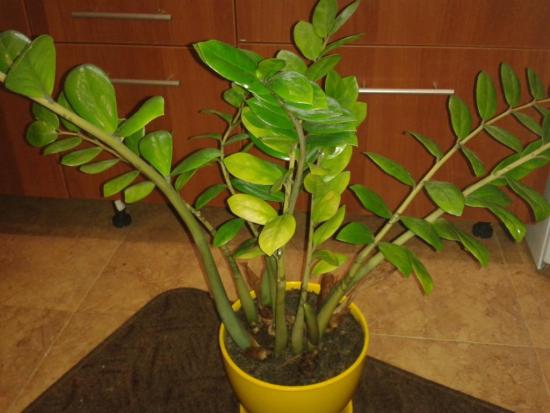
Adult plants need to be replanted approximately once every two years. When doing this, you need to check the roots and, if there is rot, cut off the damaged areas. Growing growing an African plant indoors is a fascinating activity, especially if the flower develops in front of the grower’s eyes from one leaf to a lush bush.

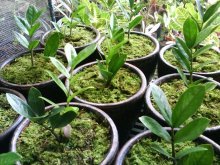
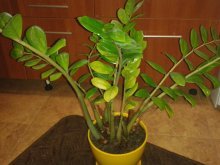
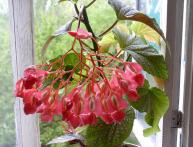
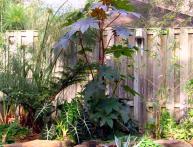
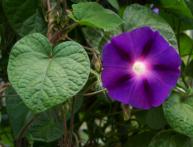

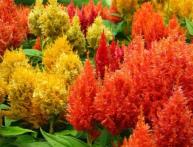

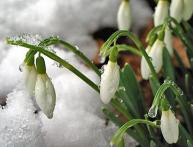

Comments
Zamioculcas has been growing at our work in a beautiful pot for four years now and looks very decorative, the size of the flower is impressive - it has already grown about a meter in height, it does not require special attention, we do not water it often, sometimes we spray it, we have not observed any flowering yet.
An interesting method of propagation, I have not used this before. Usually, when replanting, I divide the bush into parts, since it reaches a large size and no longer fits into the pot. Now I will know this option.
An interesting method of propagation, I have not used this before. Usually, when replanting, I divide the bush into parts, since it reaches a large size and no longer fits into the pot. Now I will know this option.